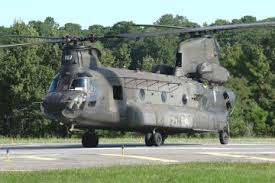SAIC WINS $830 MILLION U.S. ARMY CONTRACT FOR AVIATION SYSTEMS ENGINEERING SERVICES
Science Applications International Corp. has won an $830 million contract to continue providing hardware-in-the-loop (HWIL) aviation systems engineering services for the U.S. Army Combat Capabilities Development Command, Aviation & Missile Center (DEVCOM AvMC), Software, Simulation, Systems Engineering and Integration (S3I) Directorate.
Under the potential 5.5-year contract, SAIC will continue to provide systems engineering and integration services to all branches of the armed services and their associated program executive offices/program managers, Department of Defense components, combatant commanders, science and technology programs, other government agencies, test/training commands, cooperative research and development, and education agreement partners, universities and research centers/institutes, life cycle sustainment commands, and foreign military sales activities.
“We are honored to have been chosen as the primary provider for the Aviation Systems HWIL Engineering contract and look forward to our continued support of the S3I Directorate, the DEVCOM AMC, and the American soldier,” said Bob Genter, President, Defense & Civilian Sector, SAIC.
Work under this contract will be performed under General Services Administration’s One Acquisition Solution for Integrated Services (OASIS) professional services contract, managed by the Army Contracting Command – Redstone Arsenal.
“SAIC is privileged to support cutting-edge engineering efforts at S3I and DEVCOM AvMC along with our teammates,” said Gabe Camarillo, senior vice president, Army Business Unit. “We look forward to extending our support to Army aviation modernization in the Huntsville, Alabama area in the years to come.”
As part of the task order, SAIC will specifically support HWIL Aviation Systems including life cycle support to manned and unmanned systems (hardware, software, interfaces), subsystems, components, testbeds/laboratories/infrastructure, external interfaces/networks, and support equipment (e.g., avionics, communication/navigation/surveillance, flight controls, data buses, sensors, seekers, weapon systems, data links, command and control, health monitoring systems, ground equipment). Manned and unmanned systems include rotary, fixed-wing, targets, robotic platforms, counter unmanned aerial systems, and associated systems/technologies. The life cycle includes concept research, requirements, design, development, accreditation, testing, operation, and maintenance.

